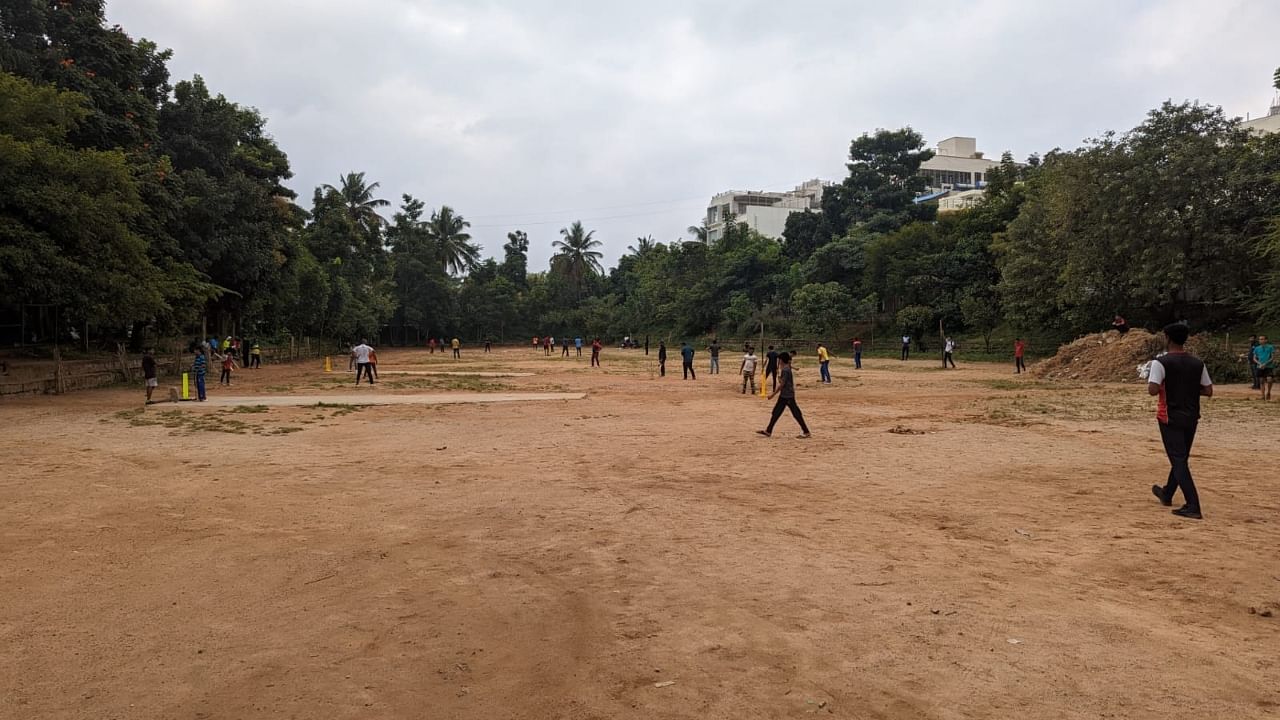
Representative image.
Credit: DH Photo
A stadium in the middle of a town would suggest its rich sporting culture to visitors. But the one at the heart of a breezy coastal town in North Malabar, where I was born and raised, tells a different story. A large maidan, without a boundary wall or fence, once stood in its place, and a tapestry of cityscape vignetted its edges. The maidan was called the ‘high school ground’, for a British-era school with mossy terracotta roofs stood on its northern side. A thatched cinema marked its eastern boundary, and traffic moved ceaselessly on the busy National Highway 17 (now NH-66) along its western edge.
In one corner of the maidan stood a lofty platform, a silent witness to history, commemorating a visit by a former prime minister who had once addressed the town from its elevated heights. Sea wind continuously blew over the rectangular expanse of golden sands interspersed with delicate blades of ‘Karuka’ grass.
The playground would come alive with scores of fitness enthusiasts starting their day with a jog. Badminton players would then arrive and shoo away the street cattle, taking their nightly rest on the court, just marked by a couple of net poles. The open expanse also accommodated a basketball court and a football field that could double up as a cricket pitch. Later in the day, the schoolchildren would flood the ground; in those days, children spent more time outside their classes than inside.
As the day progressed, multiple cricket matches would unfold in delightful chaos, much to the amusement of onlookers trying to figure out which fielder belonged to which team. A hive of spirited activities always enlivened the ground, and spectators were never in short supply. The commuters waiting for the buses, autorickshaw drivers idling under the ancient trees, and film buffs who gathered outside the cinema, catching snippets of dialogue and songs from matinees inside, would burst into claps whenever the batsmen hit a shot to the boundary or a wicket fell.
One fine day, municipal authorities decided to erect a sports stadium on the maidan. After all, confined spaces are easy to administer, and soft boundaries are nightmarish to the seats of power. The ingenious idea was that the stadium just needed a portion of the ground, and the remaining area could be utilised for constructing revenue-generating shopping spaces. A sports stadium could preempt any prospective public protest.
Today, whenever I revisit the town, the imposing stadium stirs up a mix of emotions. The concrete structure stands as the clumsiest stroke on the canvas. The town lost its idyllic vista and the children, their open playground. The lock of the concrete Colosseum is only opened once in a while, whenever there is a major sporting event in the town. Rows of parked cars and lifeless mannequins have ousted the cheering children and applauding onlookers. The gleaming shop windows in the front cleverly hide the structure with rusted grills behind.